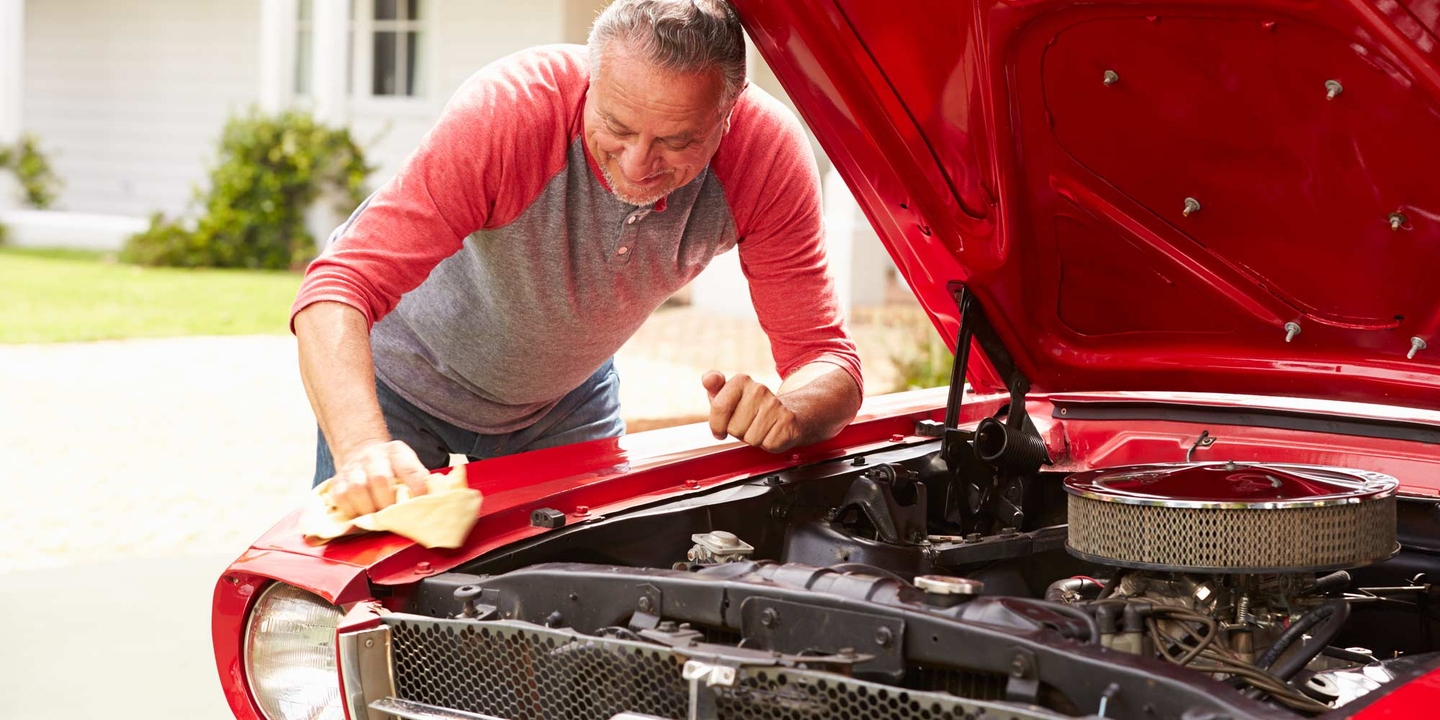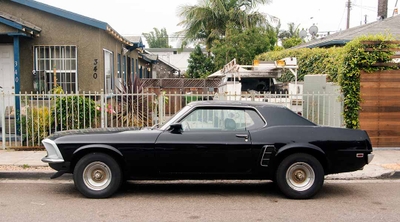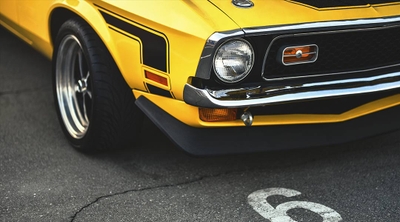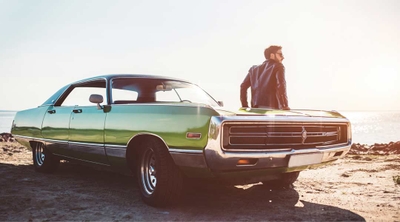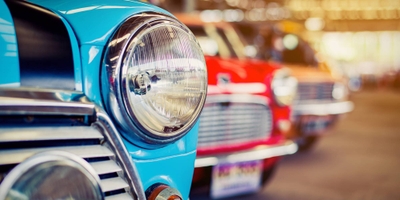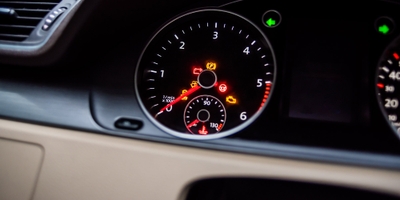How to wash a classic car
6 min read
Washing your classic car is one of life’s great pleasures. You’re not just removing dirt and grime from its finish, you’re pampering a friend and bonding with the machine. You’re also protecting your investment. Some people swear clean cars run better. We’re not saying that’s true, but washing it the right way is just as important as maintaining and storing your classic car, and keeping it running properly.
To help you, we’ll not only teach you how to wash a classic car the right way, but we’ll discuss the very best way to wash a classic car, from using the right cleaning products to drying it without scratching its paint.
Automatic washing vs. hand-washing: What is the best way to wash a classic car?
Automatic washing
While many experts and enthusiasts say that the best way to wash your classic car is by hand, most classic cars – especially vintage cars, pickup trucks, and SUVs from the 1950s, 1960s and 1970s – can handle an automatic car wash without damage. However, there are some vehicle modifications and components to consider before going through a car wash:
- Modified height: If the vehicle’s ride height has been modified, it may be too low or too high to fit through the car wash’s complex mechanisms.
- Modified width: Any vehicle with excessively wide tires may have trouble getting through.
- Old weather seals: An automatic car wash may prove to be too much for old weather seals around a classic car’s windshield, windows, and doors. These rubber seals harden and crack over time, so the high-pressure spray of water used by automated car washes may cause them to leak, allowing some water to enter the car’s interior.
- Convertible tops: Older convertible tops probably may not seal as well as they used to. A few drops of water won’t hurt anything, but excessive water leaking onto a vehicle’s dashboard, door panels, or carpet could lead to damaged wiring and mildew.
- Antennas: Automated car washes also aren’t kind to the metal radio antennas found on most classic cars. They can bend easily or be torn off the vehicle.
- Custom paint jobs: Chances are also high that the automated car wash uses harsh detergents and coarse brushes, neither of which are very good for a paint job. They can scratch, leave unattractive swirl marks, and strip wax.
Hand-washing
Washing your classic car by hand is generally recommended. In particular, if you’re concerned about how well your classic will hold up during an automatic wash, then hand-washing is the way to go. You can take more care during the process and clean all the nooks and crannies an automated car wash is sure to miss. Yes, it takes more time, but your classic will be its cleanest when the job is done and there’s no risk of damage to its paint or body.
Of course, the third option is to hire a professional car detailer to hand-wash your classic car for you. Such services are popular with classic car owners, but they can be expensive. A quality job can cost hundreds of dollars if you spring for extras such as waxing or additional washing and detailing under the hood. However, it may be money well spent if you plan to show off your engine at a classic car show.
Things to keep in mind when hand-washing your classic car
Wash in the shade
If you’re going to wash your classic yourself, always do it in the shade. Direct sunlight and hot metal body panels like fenders and hoods will dry soapy water quickly on the paint surface and cause spotting. Removing these spots later adds more time to the process and may invite paint damage. Always work in the shade on a paint finish that’s cool to the touch.
Do the wheels first
Start by washing your vehicle’s wheels. They’re probably the dirtiest part of the car and may be covered in brake dust, which can be gritty and harm a paint job. Use a cleaning product specifically designed for wheels, but make sure it’s safe for the wheels of your car. Some cleaners may be harmful to chrome or polished finishes. Read the bottle and if there’s any doubt that it may harm the finish on your wheels, don’t take the chance. Most top-quality modern wheel cleaners are marked as safe for all wheel finishes.
Use the correct towels
Don’t use old T-shirts, rags, or bathroom towels on any part of the car – they can scratch. Invest in a batch of quality microfiber towels, which are available at any auto parts store. They aren’t expensive and they’re designed specifically for these jobs. It’s also important that you don’t use the same microfiber towels on the wheels as you use on the other parts of the vehicle. Once a cloth has been soiled with wheel grime and brake dust, it’s no longer safe to use on delicate paint or trim. Keep a separate batch of these machine-washable towels for wheels and another for paint and trim.
Choose the right cleaning products
In addition to the quality wheel cleaner, it’s important to purchase other products designed to keep your classic looking its best. There are many well-known brands out there to choose from. Buy a high-quality soap specifically designed for vehicle use. As tempting as it may be, don’t go into the kitchen and grab the dish detergent. Dish soap strips wax from paint and is too harsh for automotive use. It’ll dull your paint job over time.
Soap it up
Use plenty of soapy water and rinse the car often and thoroughly during the process. Don’t let the soapy water dry on the paint. It’s also important to gently agitate the soapy water on the paint to let it do its work. Be sure to rinse your microfiber towel or wash mitt often so the dirt and grit trapped in the towel isn’t scratching your paint. If the water in the bucket looks dirty, don’t keep spreading it on the car; dump it out and fill it again with a fresh batch.
If your car has black plastic trim, which was popular on many models in the 1980s and 1990s, over time it may dull and won’t match the shine of your paint. This is easy to fix with a product specifically designed to bring back its luster. There are several on the market that are quick and easy to apply.
Drying your classic car
Don’t dry your classic with an old beach towel. Better to invest in an oversized microfiber towel designed for the job. Not only will it absorb more water and dry your car much faster, but it won’t scratch your paint or leave swirl marks behind. A natural or artificial chamois or shammy cloth will also work well, but the microfiber products are the latest technology and work best. Plus, like the smaller versions, they’re machine washable and last a long time.
After you wash the car’s exterior, dry it thoroughly before moving on to cleaning and vacuuming its interior. This will give the water hidden behind window trim, door handles, and other cavities 10 or 15 minutes to drip out. You can then go back and re-dry those areas before the water dries on the paint.
Buffing and waxing your classic car
If your classic car’s old paint looks dry and faded, chances are it still has plenty of shine left in it. Revitalizing an old, weathered paint job does require special tools and products, but the results will be worth it. You’ll be amazed at how much better that paint job will look after an afternoon spent buffing it out.
Buffing a paint job is a multistage process, so expect it to take some time. Use a dedicated electric buffer – not a drill or a grinder, as they spin too fast, create heat, and could destroy your car’s finish. The buffing process requires patience and some special techniques, so you may want to find some videos online that demonstrate how to do it properly.
In addition to a dedicated electric buffer, may also want to buy buffer pads and special products such as cutting and rubbing compounds, as well as a high-quality wax. Your investment of time and money can remove years of oxidation and scratches from the weathered surface in a matter of hours, bringing out the paint’s color and gloss on your classic vehicle.
How often should you wash your classic car?
Generally, you should wash your classic car weekly if you’re taking it out on the road. This is a more frequent schedule than a late-model car, which needs a wash every couple of weeks or so. Modern chemicals can do more damage to your classic car, so keeping it clean is a must. Of course, if you’re keeping your car in storage, frequent washing isn’t as urgent.
Keeping your classic car clean
In between washes, you should still strive to keep your classic vehicle as clean as possible. When you can, drive on roads that are well-maintained and only drive in good weather. When you aren’t driving it, use a car cover to keep the vehicle free from dust, dirt, and accidental scratches. You could also consider renting space in a climate-controlled garage to avoid fluctuations in temperature and humidity. In fact, the manner in which you store your classic car can affect your insurance.
Learn more about keeping your clean classic car safe with classic car insurance.
